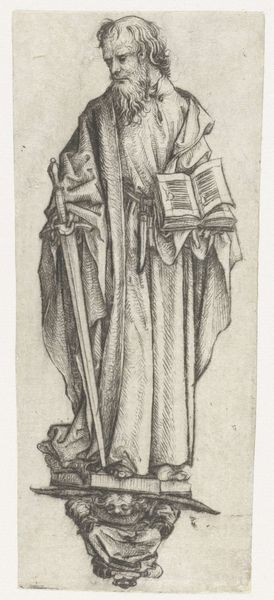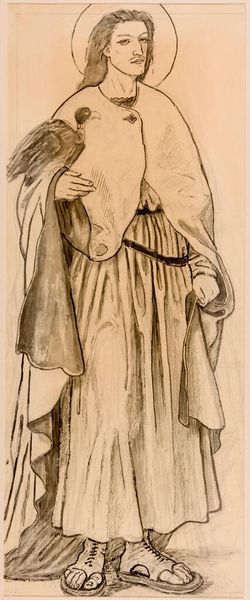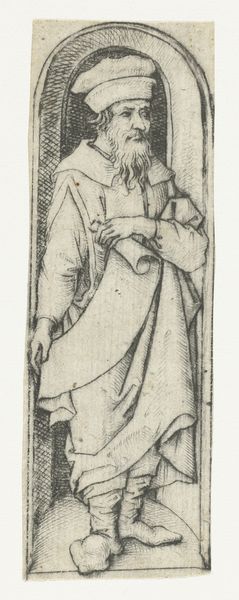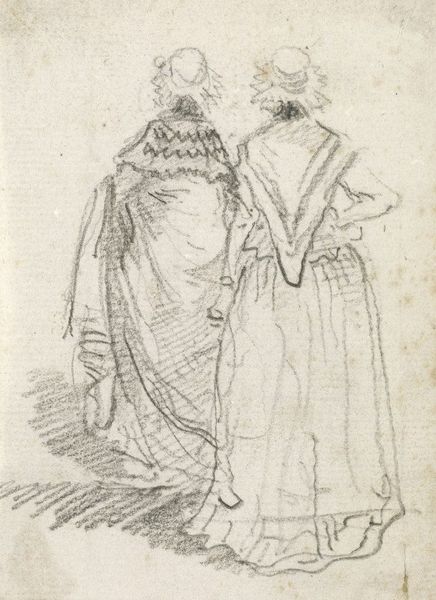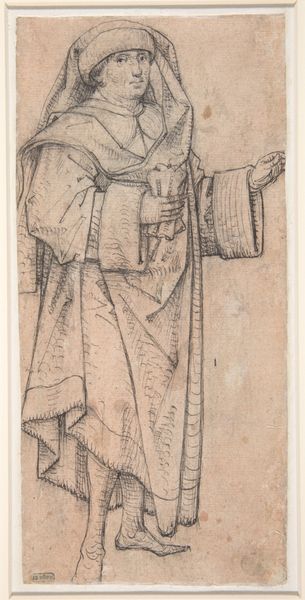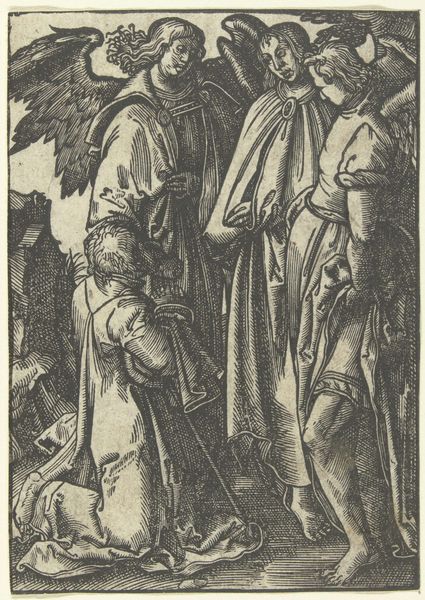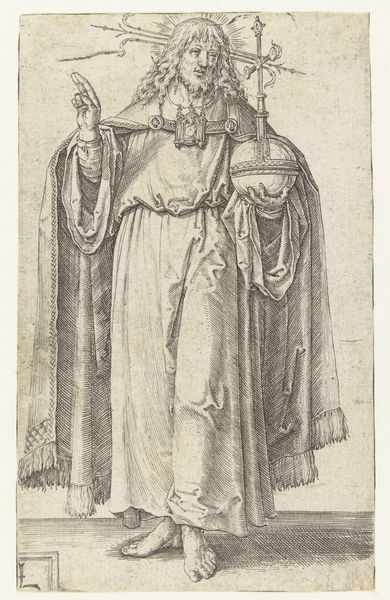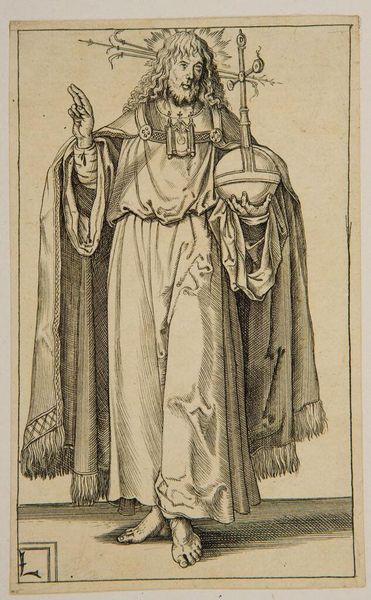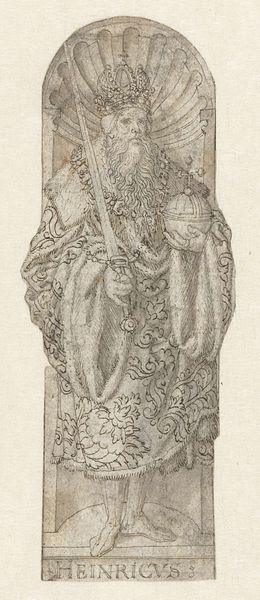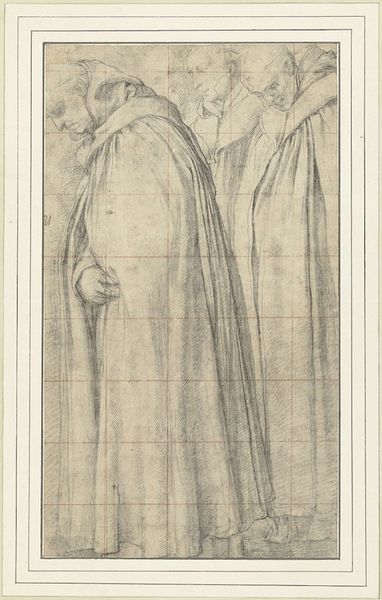
drawing, pencil
#
drawing
#
figuration
#
pencil
#
history-painting
#
pre-raphaelites
Copyright: Public Domain: Artvee
Edward Burne-Jones created this drawing of St Nicholas and St Stephen, likely in England during the late 19th century, as a design for stained glass. We can consider how it evokes medieval artistic traditions within the context of the Victorian era. The image creates meaning through its use of Christian iconography and historical associations. St. Nicholas, known for his generosity, is depicted holding a child, while St. Stephen, the first Christian martyr, carries a book and palm frond. Burne-Jones was deeply involved in the Arts and Crafts movement, which sought to revive traditional craftsmanship and challenge industrial production. The drawing reflects the movement's interest in medieval art and its critique of industrial society. The aesthetic and spiritual values associated with the Middle Ages contrast sharply with the social realities of Victorian England. To understand Burne-Jones's work better, we can look at the archives of the Arts and Crafts movement, church records, and writings by and about the artist, which provide valuable insights into the social and institutional contexts that shaped his art.
Comments
No comments
Be the first to comment and join the conversation on the ultimate creative platform.
